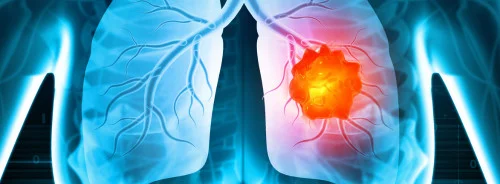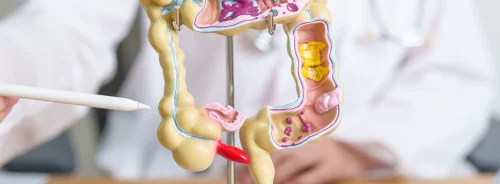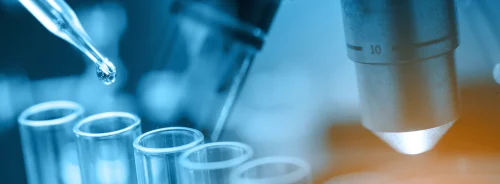Rectal cancer is a prevalent digestive tract tumour and common cancer. The TNM staging system is widely used to predict prognosis and guide adjuvant therapy post-surgery. However, due to tumour heterogeneity, accurate prognostic, diagnostic, and predictive tests are challenging, necessitating the inclusion of additional risk factors for better patient stratification.
Research indicates that the invasive tumour front is crucial for rectal cancer progression and metastasis, with tumour budding (TB) being a significant indicator of recurrence, metastasis, and reduced survival. While TB is often assessed post-operatively, its preoperative evaluation is limited. Although preoperative biopsy can help identify high-risk patients, it is invasive and often insufficient.
Rectal MRI is a non-invasive method used for pre-treatment evaluation, offering superior soft tissue contrast and signal-to-noise ratios compared to CT or PET-CT. However, conventional MRI cannot quantitatively assess deep histopathologic features like TB. Radiomics, a burgeoning field in oncology, uses imaging data to predict clinical outcomes and monitor treatment. Despite its potential, MRI-based radiomics models for assessing TB in rectal cancer remain unexplored.
A recent study published in Academic Radiology aimed to develop a combined model using clinical, MRI semantic, and radiomics features for the non-invasive preoperative assessment of TB grades in rectal cancer patients.
Integrated Clinical and Radiomics Analysis for Preoperative Tumour Budding Grade Prediction
This retrospective study analysed 161 rectal cancer patients hospitalised between January 2018 and March 2022. Inclusion criteria were confirmed rectal adenocarcinoma, pre-surgery MRI, and complete postoperative pathology data, including TB grade. Exclusion criteria included prior treatment, poor image quality, incomplete data, or unidentifiable tumour lesions.
Clinical features like gender, age, and carcinoembryonic antigen (CEA) levels were collected. MRI was performed using a 3.0 T scanner without spasmolytics or contrast agents. Key MRI sequences used were oblique-axial T2WI, axial DWI, and axial CE-T1WI.
MRI semantic features included tumour location, length, transmural nodules sign, CP, CRM, EMVI, MRI-T stage, and MRI-N stage, assessed by experienced radiologists. Pathologic evaluation involved counting TB in stained tissue sections, with TB grades classified as low, intermediate, or high.
Tumour regions were outlined on MRI images using 3D Slicer software for image segmentation. Radiomics features were extracted and selected based on stability and reproducibility criteria. Features were normalised and filtered to avoid overfitting.
Model construction involved logistic regression analysis of clinical and MRI features to predict TB grade. Radiomics scores were calculated for different MRI sequences, and a combined model integrating these scores with clinical and MRI features was developed. Model performance was evaluated using ROC curves, DeLong test, IDI, and decision curve analysis (DCA). Calibration curves assessed the agreement between predicted and actual TB probabilities.
Patient Characteristics & Selection of Radiomics Features
After excluding patients with prior treatment (15), poor-quality images (12), incomplete clinical data (13), and unidentifiable tumour lesions (1), 120 patients remained. These were divided into training (48 males, 24 females, mean age 66.24 years) and validation cohorts (34 males, 14 females, mean age 66.15 years) in a 6:4 ratio. Both cohorts had 33.3% of patients with high-grade TB, showing no significant difference. The consistency between the two pathologists in TB grade evaluation was high (Κ = 0.874). No significant differences were found between the cohorts in terms of gender, age, CEA, tumour location, tumour length, and other MRI semantic features.
From each MRI sequence (T2WI, DWI, T1CE), 1223 features were extracted. Features with high consistency (ICCs > 0.80) were selected, resulting in seven features from each sequence for further analysis.
Model Construction & Evaluation
The evaluation of MRI semantic features showed high consistency (Κ = 0.839). Univariate logistic regression identified tumour length (P = 0.012), CRM (P = 0.023), EMVI (P = 0.071), and MRI-N stage (P = 0.013) as significantly associated with TB grade. Multivariate analysis confirmed the MRI-N stage as an independent risk factor (odds ratio: 2.651, P = 0.020). Using these findings, a clinical model was constructed. Radiomics scores (RS) from T2WI, DWI, and T1CE were combined with the MRI-N stage to create the combined model.
Model performance was evaluated using ROC curves. The combined model demonstrated the highest discriminatory ability, with an AUC of 0.961 in the training cohort, outperforming other models (P < 0.05). In the validation cohort, the combined model also showed superior performance with an AUC of 0.891, significantly better than the clinical, T2WI, and DWI models. The combined model's improvement over the T1CE model was not statistically significant (P = 0.245). Integrated discrimination improvement (IDI) confirmed the combined model's superior predictive ability compared to other models. Sensitivity, specificity, positive predictive value, negative predictive value, and accuracy for each model were summarised, with the combined model showing the best overall performance.
Guiding Risk Stratification and Treatment Decisions in Rectal Cancer
Preoperative neoadjuvant therapy has been established to improve the prognosis of patients with rectal cancer, especially those with high-risk factors like lymph node metastasis, positive circumferential resection margin (CRM), and extramural vascular invasion (EMVI), according to ESMO guidelines. Studies indicate that a higher tumour budding (TB) grade correlates with adverse clinical and histopathological features, including increased recurrence rates, higher pathological stages, and poorer overall survival rates. This underscores the importance of preoperatively assessing TB grade to guide clinical practice and enhance risk stratification for rectal cancer patients.
For instance, identifying high-grade TB before treatment can inform decisions such as selecting appropriate candidates for a "watch and wait" approach among patients with locally advanced rectal cancer. This approach aims to avoid extensive surgery and reduce postoperative complications, thereby improving patients' quality of life.
Integrating Radiomics for Enhanced Clinical Decision-Making
While biopsy remains the conventional method for TB assessment, its limitations prompt the exploration of non-invasive tools like imaging. Several studies have developed models using MRI for TB assessment in various cancers. For example, Chong et al. utilised MRI to establish a radiomics model predicting TB grade in cervical cancer patients, demonstrating promising predictive efficacy.
However, MRI-based models specifically for rectal cancer and TB assessment are limited. Li et al. developed an MRI radiomics model for locally advanced rectal cancer, while this study aimed to validate a model applicable across all stages. It integrated multiparametric MRI radiomics with clinical information to construct a combined model. This approach showed superior performance with high area under the curve (AUC) values in both training (AUC = 0.961) and validation cohorts (AUC = 0.891), indicating its effectiveness in clinical decision-making.
Furthermore, the study highlighted the significance of the MRI-N stage in TB prediction, despite its modest performance as a standalone clinical metric. The T1CE sequence was particularly effective in capturing tumour heterogeneity and angiogenesis, offering insights that could enhance preoperative staging and treatment planning.
While the findings underscore the potential of radiomics in improving TB assessment, the study acknowledged limitations such as its retrospective nature, small sample size, and the subjectivity of manual image segmentation. Future research should explore automated segmentation methods and validate these findings in larger, multicentre prospective studies to ensure their clinical reliability and applicability.
Source: Academic Radiology
Image Credit: iStock






